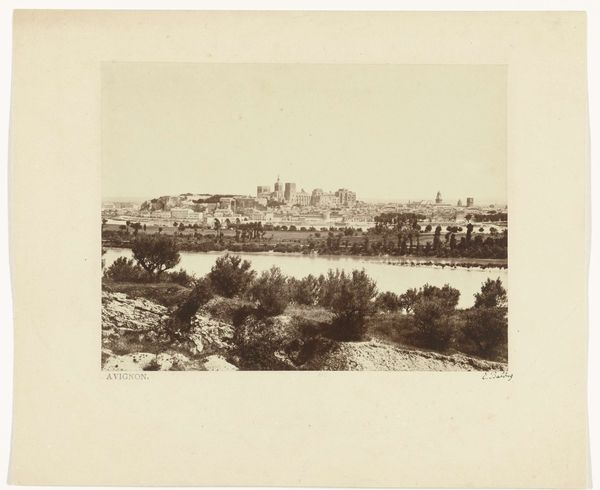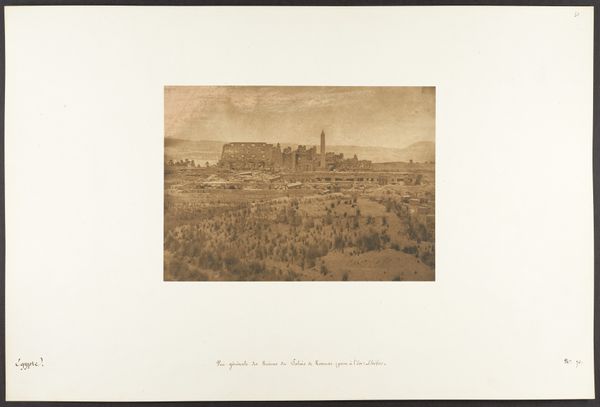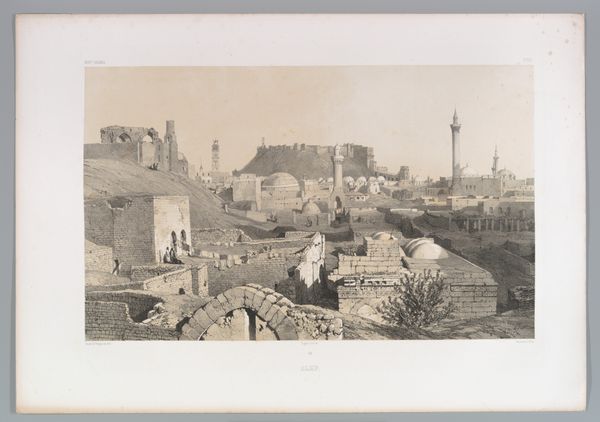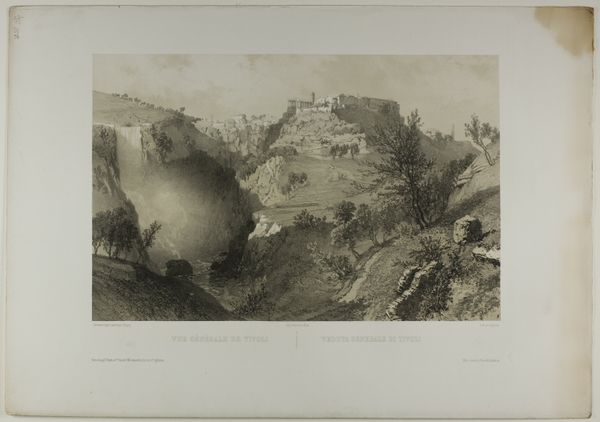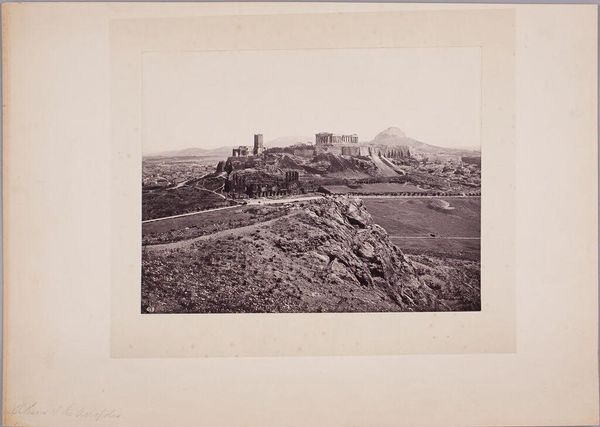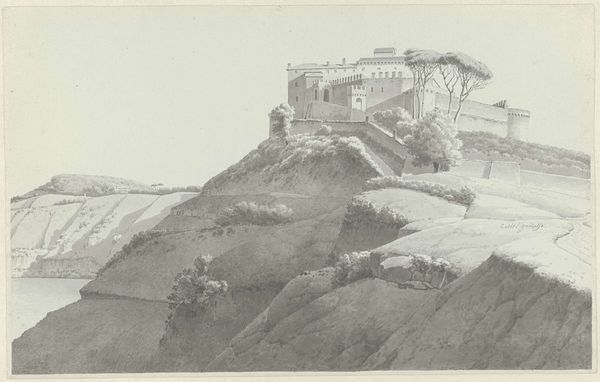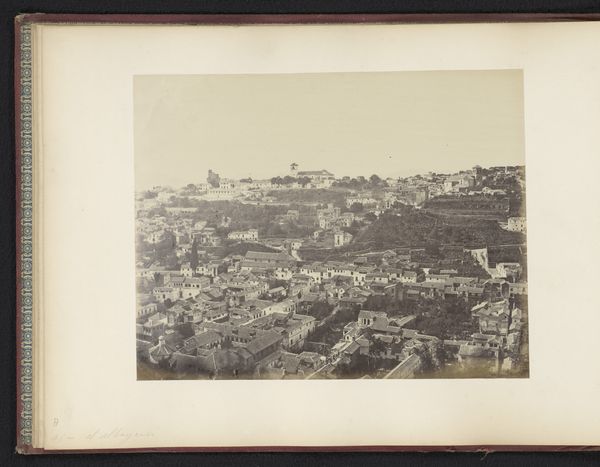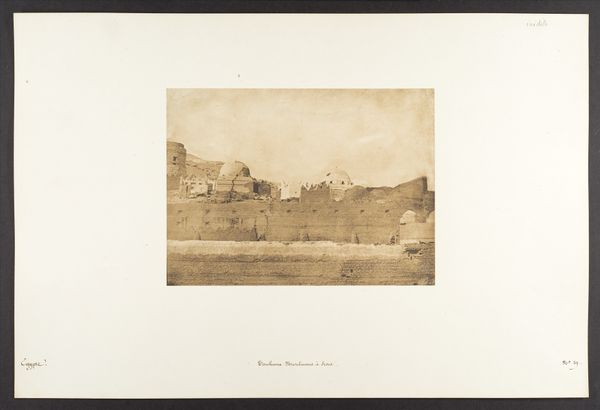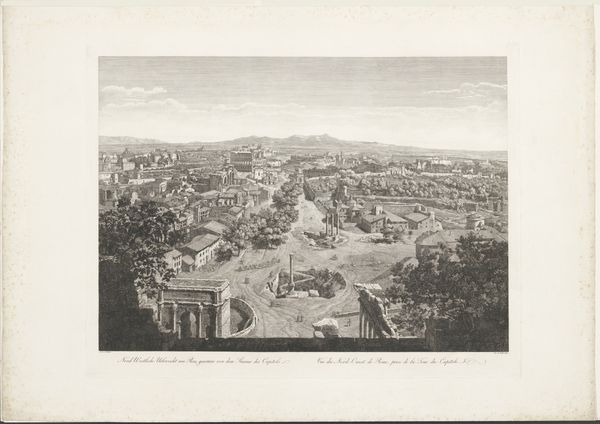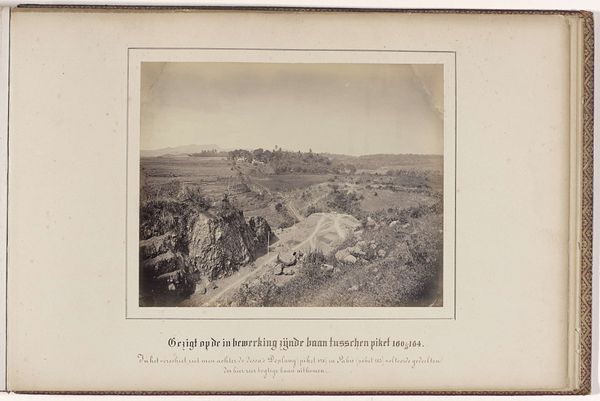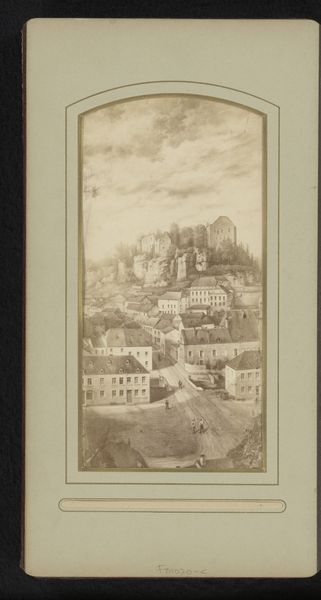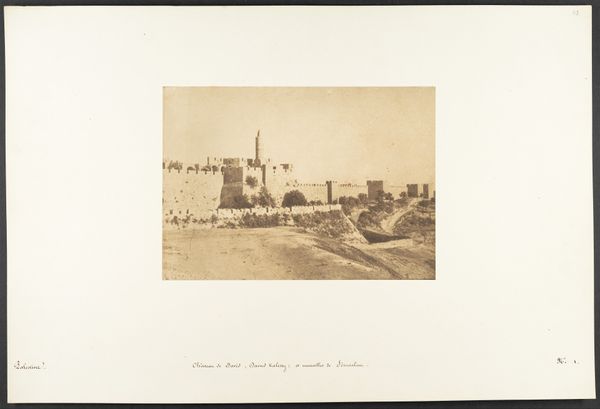
Stadhouderskade, gezien vanaf de oostelijke middentoren van het Rijksmuseum naar het oosten, Amsterdam before 1894
0:00
0:00
print, photography
#
print photography
#
pictorialism
# print
#
landscape
#
photography
#
cityscape
Dimensions: height 282 mm, width 463 mm, height 482 mm, width 640 mm
Copyright: Rijks Museum: Open Domain
Curator: Oh, it's one of those moody days looking at a cityscape. Editor: Indeed! Here we have "Stadhouderskade, seen from the eastern middle tower of the Rijksmuseum to the east, Amsterdam", created before 1894 by Gerrit Hendricus Heinen. It’s a photographic print showcasing Amsterdam from an elevated perspective. Curator: Moody as in, a lot of gray on gray, which I, incidentally, find supremely comforting. It feels vast and somehow intimate, all at once. Like peeking into a dream you almost remember. Editor: It’s an interesting feeling to attach to urban space. Pictorialism, as seen in this photograph, really was interested in elevating photography to the status of painting through soft focus and evocative compositions, mirroring feelings rather than purely documenting. Do you think this strategy actually democratizes image-making, by allowing feeling to trump "realism"? Curator: Democra...Well, I appreciate it when artists actively smudge those invisible lines. Gives my brain more room to wander, and I find wandering a revolutionary act in itself. The artist really transforms a modern metropolis, and its architecture, into a space to behold a mood, a thought. A rebellion of sorts against rigid documentation, right? Editor: In its own way, certainly. Consider the sociopolitical implications: By prioritizing atmosphere, and focusing on form and composition that mirrors the styles of fine art, Pictorialist photography consciously attempts to cater to bourgeois tastes, thereby establishing itself as 'high art,' akin to the class aspirations that gave rise to the modern city it depicts. What do you feel when considering who this image spoke for, and perhaps who was consciously excluded? Curator: A silent, collective *sigh* rippling through the ages. Maybe that sigh itself is the artwork’s most compelling subject! It invites all kinds of sighs, you know, about the then, about the now, and all our unfulfilled dreams of perfect urban utopias. It’s quite lovely, if I dare say so myself! Editor: A potent and melancholic perspective, exactly that emotional ambiguity helps us better understand historical transformations. I hadn’t considered it quite like that before; a silent collective sigh encapsulating our collective urban experience. Thank you for that insight. Curator: Likewise. It’s wonderful to feel seen from atop a tower now and then, isn’t it?
Comments
No comments
Be the first to comment and join the conversation on the ultimate creative platform.
